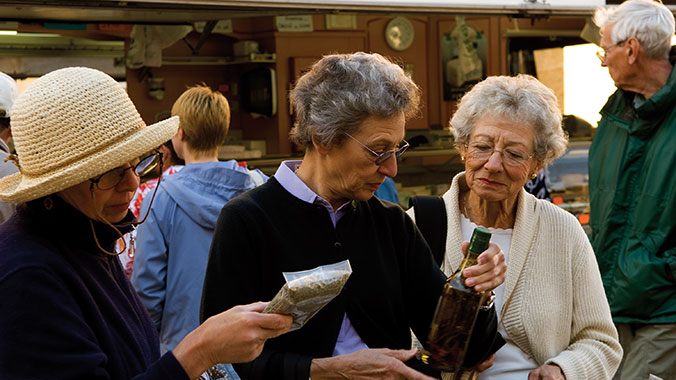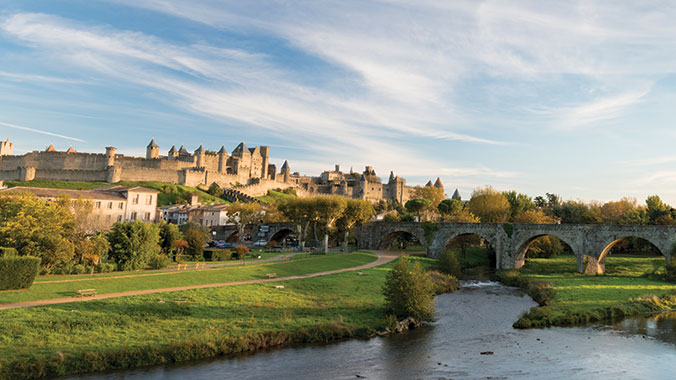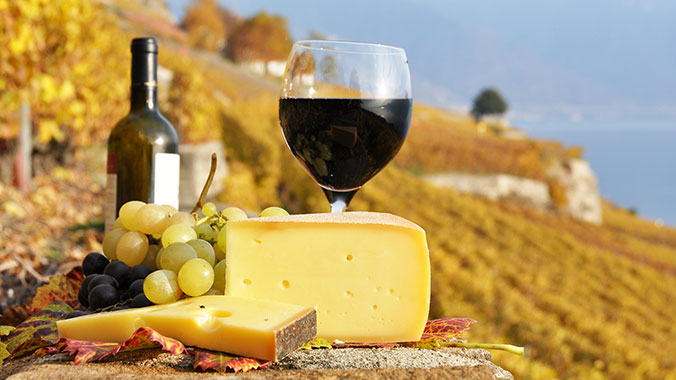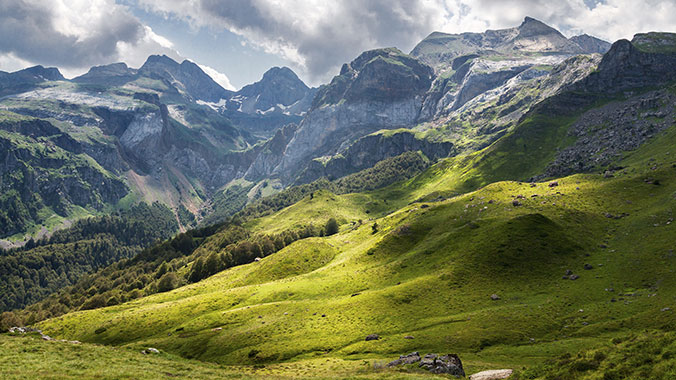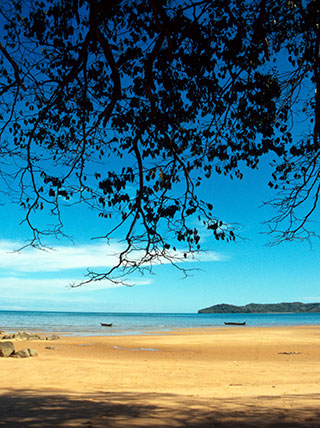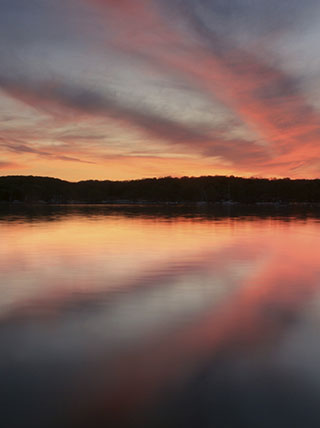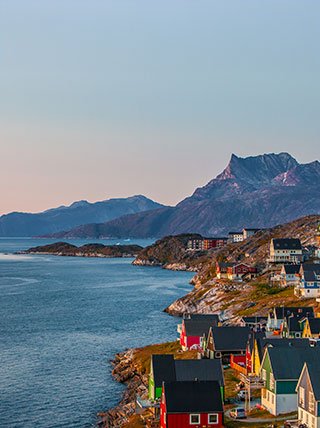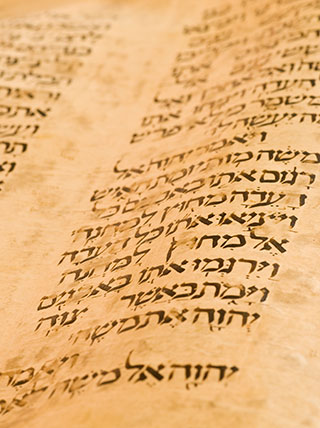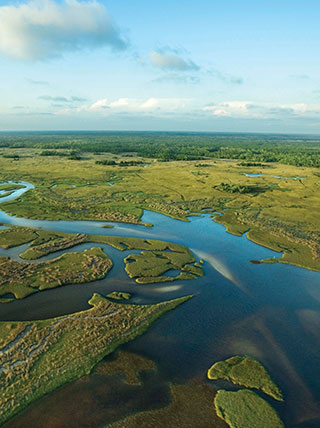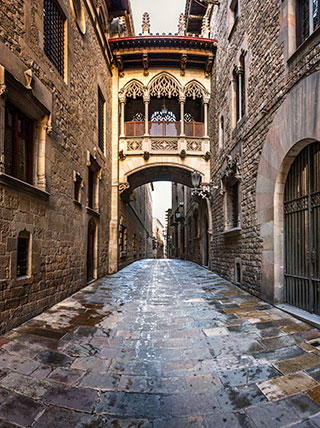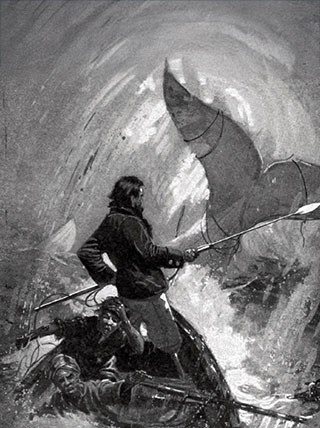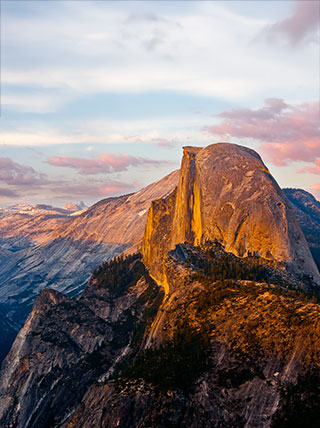Spain/France
From Languedoc to Catalonia Through the Pyrenees: A Cross-Border Discovery
Program No. 21705RJ
Explore the French and Spanish Pyrenees, discovering pristine wilderness, medieval villages, Cathar history and Romanesque architecture in this unique region of Europe.
Enroll with Confidence
We want your Road Scholar learning adventure to be something to look forward to—not worry about. Learn more
Protecting the Environment
We offset a portion of the emissions created by your travel. Learn more
Itinerary
While we make every effort to ensure the accuracy of our published materials, programs are typically advertised more than a year prior to their start date.
Read More.
While we make every effort to ensure the accuracy of our published materials, programs are typically advertised more than a year prior to their start date. As a result, some program activities, schedules, accommodations, personnel, and other logistics occasionally change due to local conditions or circumstances. Should a major change occur, we will make every effort to alert you. For less significant changes, we will update you during orientation. Thank you for your understanding.
Duration
14 days
13 nights
What's Included
28 meals (
12B, 6L, 10D
)
5 expert-led lectures
18 expert-led field trips
An experienced Group Leader
12 nights of accommodations
Taxes and customary gratuity
Road Scholar Assurance Plan
Day
1
In Transit to Program
Location:
In Flight
Day
2
Arrive Montpellier, Check-in, Orientation, Welcome Dinner
Location:
Pezenas
Meals:
D
Stay:
La Distillerie
Activity Note
Hotel check-in from 3:00 p.m.
Afternoon:
After checking in at the hotel and getting your room, take some time to freshen up and relax before our Orientation session. Orientation: 6:00 p.m. The Group Leader will greet everyone and lead introductions. We will review the up-to-date program schedule, discuss roles and responsibilities, logistics, safety guidelines, emergency procedures, and answer questions. Lectures will be given by our Study Leader (unless specified otherwise), who will also serve as our Group Leader. Note that in Spain in particular, dinners are MUCH later than in North America, and there will be little or no leisure time in the evenings. Periods in the daily schedule designated as “Free time” and “At leisure” offer opportunities to do what you like and make your experience even more meaningful and memorable according to your personal preferences. The Group Leader will be happy to offer suggestions. Program activities, schedules, personnel, and indicated distances or times may change due to local circumstances/conditions. In the event of changes, we will alert you as quickly as possible. Thank you for your understanding.
Dinner:
At the hotel, we will have a welcome dinner a with glass of wine & water; other beverages available for purchase.
Evening:
At leisure. Continue getting to know your fellow Road Scholars, settle in, and get a good night’s rest for the day ahead.
Day
3
The Languedoc, Pézenas, Weekly Market
Location:
Pezenas
Meals:
B,L
Stay:
La Distillerie
Activity Note
Walking about 2 miles throughout the day and periods of standing; uneven terrain, cobblestones.
Breakfast:
At the hotel, the breakfast buffet offers a variety of choices including hot and cold items plus milk, juice, coffee, tea, water.
Morning:
We’ll gather in the hotel with our Study Leader for a presentation on the Languedoc-Roussillon region — one of the most fascinating areas of Europe — that borders the Mediterranean Sea to the east and the Pyrénées Mountains to the south. It benefits from an exceptional climate, has abundant wildlife, a spectacular coast, and a rich, complex history. In 2016, it was incorporated with the region of Midi-Pyrénées into a new administrative department known as Occitanie, recalling the once vibrant language of the South — Occitan — stretching back beyond the Visigoths. Then, with our Study Leader, we’ll set out on a walking field trip to explore the lively outdoor market of Pézenas while learning about its economic and cultural significance to the village and surrounding area.
Lunch:
Make your own lunch from the many choices available at the market.
Afternoon:
Next, we’ll take a walking field trip with a local expert through Pézenas to see more of the village as well as the house where Molière lived, all while learning about the history and importance of the village and region. We will return to the hotel after our field trip with some time to freshen up and relax before dinner.
Dinner:
At leisure
Evening:
At leisure.
Day
4
Contemporary France, local wines, Sète,
Location:
Pezenas
Meals:
B,D
Stay:
La Distillerie
Activity Note
Getting on/off a motorcoach; riding about 50 miles (80 km) over the course of the day, approximately 2 hours driving. Walking up to 21/2 miles throughout the day; periods of standing. Extent and duration of walking and other activities during free time according to personal choice.
Breakfast:
Hotel buffet.
Morning:
This morning, we’ll join our Study Leader in the hotel meeting room for an overview and discussion of key issues in modern France such as the economic situation, social policy, immigration, and more. Late morning, we will board a motorcoach at the hotel and ride into the countryside outside Villeveyrac, where a local expert will lead our exploration of the Abbaye de Valmagne, founded in 1139 as a Benedictine monastery and known for its wine production. The abbaye was saved from destruction during the French Revolution because it had become a winery with huge wine casks filling the walls of the nave. We’ll get a closer look at the cloisters and the grounds where the grapes are grown. We will conclude our visit with a tasting of the Abbaye’s wine and learn about the local “appellation d’origine contrôlée” — AOC — which means protected or controlled designation of origin. In France, the certified AOC designation is of great importance in classifying wines of high quality. We’ll then head by motorcoach to Sète.
Lunch:
On your own to explore local cuisine. The Group Leader will be happy to offer suggestions.
Afternoon:
After a brief stop for lunch, we will embark on an expert-led visit to the coastal town of Sète. Here, we will witness the endpoint of the Canal du Midi, a UNESCO World Heritage site. This remarkable 360-kilometer network of navigable waterways connects the Mediterranean Sea with the Atlantic Ocean through 328 engineering marvels, including locks, aqueducts, bridges, and tunnels. Commissioned by Louis XIV and constructed between 1667 and 1694, the Canal du Midi is considered one of the most outstanding achievements in civil engineering and played a pivotal role in paving the way for the Industrial Revolution. We will return to the hotel late afternoon
Dinner:
Hotel plated meal.
Evening:
At leisure. Prepare for check-out and transfer in the morning.
Day
5
History of the Cathars, Minerve, Arrive Couiza
Location:
Couiza
Meals:
B,L,D
Stay:
Chateau des Ducs de Joyeuse
Activity Note
Getting on/off a motorcoach; riding about 105 miles (170 km) throughout the day, approximately 3.5 hours total: about 1 hour to Béziers, 1/2 hour to Minerve, and 1.5 hours to Couiza. Walking up to 3 miles throughout the day; cobblestones and uneven surfaces, some steep inclines; no elevators in historic 2-story hotel.
Breakfast:
Hotel buffet.
Morning:
After checking out of the hotel, we’ll transfer via motorcoach to Béziers, a city rich in Romanesque and Cathar history. A local Cathar expert will lead a field trip focusing on these interrelated histories. Catharism, which seems to have begun in the Byzantine Empire, appeared in Europe during the 11th century. By the 12th century, it had become incredibly popular and even the dominant faith in some areas, particularly the south of France. The central tenet, with an emphasis on anti-materialism and personal purity, was duality: the opposition of good and evil. The “good” God was sovereign over heaven and souls while the “bad” God ruled the material world. It was forcefully opposed by the Roman Catholic Church, which condemned Cathars as heretics since they also denied the divinity of Jesus and the authority of the Pope. Cathars did not use that name and simply called themselves Christians. The Church of Rome most often referred to them as Albigenses for the town of Albi that was thought to be the nerve center of the movement. In 1208, Pope Innocent III launched a crusade to crush the Cathars, proclaiming that nobles from northern France leading the army could keep lands seized and common soldiers would receive remission of their sins. The Crusader army attacked Cathar strongholds beginning with Béziers where the population consisted of both Cathars and Catholics. When the crusaders had taken control of the city, their leader is said to have ordered, “Kill them all. God will recognize his own.” As many as 20,000 residents were slaughtered and the town burned. What became known as the Albigensian Crusade lasted 20 years. We will view two sites associated with the Massacre at Béziers: L’Église de la Madeleine — the Church of Mary Magdalene — and the grandiose Romanesque cathedral of Saint-Nazaire and Saint Celse. We will then continue our transfer and ride on to Minerve.
Lunch:
Group lunch at a local restaurant in Minerve. One glass of wine and water included
Afternoon:
With our local expert, we’ll explore the charming vineyard village of Minerve, also rich in Cathar history and tradition. We’ll then ride on to Couiza and check in to our hotel.
Dinner:
At the hotel, we’ll have dinner with beverage choices of a glass of wine, coffee, tea, water; other beverages available for purchase.
Evening:
At leisure.
Day
6
Carcassonne, Free Time
Location:
Couiza
Meals:
B,D
Stay:
Chateau des Ducs de Joyeuse
Activity Note
Getting on/off a motorcoach; riding about 30 miles (50 km), approximately 1 hour each way. Walking up to 2 miles; cobblestones, gentle inclines. Extent and duration of walking and other activities during free time according to personal choice.
Breakfast:
At the hotel, the breakfast buffet offers a variety of choices including hot and cold items plus milk, juice, coffee, tea, water.
Morning:
We will set out by motorcoach to the majestic walled city of Carcassonne that was first fortified in the Gallo-Roman era, circa 100 BCE. It later became a Cathar stronghold. With a local expert, we’ll learn about the history of Carcassonne as we spend the day exploring this beautiful city that inspired kings and writers. In 1209, capturing Carcassonne was next on the agenda of the Pope’s army. After a series of armed confrontations, its ruler — Viscount Raymond-Roger Trencavel — went out under a white flag to parley with the Crusaders but he was seized and the city surrendered. This time, the residents were allowed safe passage to escape on condition that they left everything they owned behind. Then, unencumbered by bodies, the army looted the city. The upper “old” city is known as La Cité; the lower city — La Bastide — is also known as St. Louis. By the 19th century, it was on the verge of destruction, its stones and other materials being taken for local building projects. Eugène Viollet-le-Duc (1814-1879) was a leading French architect who had restored a number of France’s most important monuments. With approval from Emperor Napoleon III, he began work in 1853 on saving and restoring Carcassonne, work that continued for 50 years. Carcassonne today is a UNESCO-designated World Heritage Site, but it is thanks to Viollet-le-Duc that we see this most complete representation of a medieval fortified town. The walls extend nearly two miles (three kilometers) with 52 massive towers.
Lunch:
On your own to have what you like.
Afternoon:
Free time. This period of time has been set aside for your personal independent exploration to see and do what interests you most. The Group Leader will be happy to offer suggestions. We will regroup at a designated time and place for returning to the hotel.
Dinner:
Hotel plated meal.
Evening:
At leisure.
Day
7
Cathar Châteaux, Villerouge-Termenès
Location:
Couiza
Meals:
B,L,D
Stay:
Chateau des Ducs de Joyeuse
Activity Note
Getting on/off a motorcoach; riding about 90 miles (145 km) throughout the day, approximately 3 hours. Walking up to 3 miles; uneven surfaces, steep inclines, many steps, cobblestones. Quéribus has an extremely steep entrance with cobblestones and a large number of narrow, winding steps to reach the interior.
Breakfast:
Hotel buffet.
Morning:
With a local expert, we’ll take a field trip to explore of the region’s Cathar chateaux, though in fact some were built after the Cathars’ demise. The remains of these medieval fortresses, romantic and ruined, are situated in a broad arc around Carcassonne. We’ll see the ruined remains of the Château de Peyrepertuse, which in Occitan means “pierced rock and perched high on a craggy precipice.” We’ll then make our way to the ruins of Château de Quéribus, the last Cathar stronghold in France. Situated on a rocky ridge at a height of more than 2,000 feet (728 meters), it was constructed in the 11th century, though some sources say the 10th. This was an area that changed hands a number of times, eventually belonging to a family devoted to the Cathars. Many refugees were protected here until Quéribus fell to French forces in 1255. Later treaties and changes in diplomacy made it irrelevant as a defense and it, too, was abandoned after the French Revolution.
Lunch:
At a local restaurant, we’ll enjoy a typical lunch with a glass of wine and water included; other beverages available for purchase.
Afternoon:
We will continue our examination of Cathar history and culture with a field trip to Villerouge-Termenès, where a local Cathar expert will lead our exploration. This “red village” — Vilaroja de Termenés in Occitan — contains the 12th-century chateau that gave the village its name. Despite the fact that it was owned and controlled by the Archbishops of Narbonne, it was friendly to the Cathars. It was taken by the Pope’s army in 1210. The Alibigensian Crusade eventually devolved into the Inquisition, charged with rooting out heretics. Among those most hated and sought after were “parfaits” — called “bon hommes” and “bon femmes” by the Cathars — wise male and female mentors and role models who practiced ascetic lifestyles. The Cathars recognized no differences in status between men and women, another of the many reasons for their persecution. The last known Cathar parfait, Guilhem Bélibaste, was captured by the Inquisition and burned at the stake here in 1321. Next, we will visit the home of our Cathar expert to expand our knowledge of the Cathars as well as life in the Languedoc today including Q&A.
Dinner:
At our local expert’s home, we’ll have a light family-style dinner featuring regional favorites.
Evening:
Returning to the hotel, the remainder of the evening is at leisure. Prepare for check-out and transfer in the morning.
Day
8
Foix, Andorra, La Seu d’Urgell
Location:
La Seu D'Urgell
Meals:
B,D
Stay:
Parador de la Seu d'Urgell
Activity Note
Getting on/off a motorcoach; riding about 95 miles (150 km) throughout the day, approximately 4 hours including stops; winding, mountainous roads. Walking up to 1 mile throughout the day; steep, uneven ground around Foix.
Breakfast:
Hotel buffet.
Morning:
After checking out of the hotel, we will begin our transfer to La Seu d’Urgell in the Catalan Pyrenees with commentary en route. We will have a view in the distance of Château de Foix, the impregnable bastion of the Cathars and symbol of the Counts of Foix and Bearn. . Later we'll head to Andorra through the wooded Ariège Valley.
Lunch:
On your own to explore the local cuisine
Afternoon:
Continuing our ride through Pyrenean valleys, our Study Leader will give us a presentation providing insights into the Principality of Andorra and its development from a small country to an isolated Pyrenean outpost to a prosperous tourist and — often controversial — financial center and a member of the United Nations. Arriving in the capital of Andorra La Vella, we’ll have a brief stop before reboarding the motorcoach, completing the last leg of our transfer to La Seu d’Urgell, and checking in to our hotel.
Dinner:
At the hotel, we’ll have a group meal, plus a glass of wine and water; other beverages available for purchase.
Evening:
At leisure.
Day
9
Catalonia, Cathedral de la Seu d’Urgell & Museum, Cheese
Location:
La Seu D'Urgell
Meals:
B,D
Stay:
Parador de la Seu d'Urgell
Activity Note
Getting on/off a motorcoach; riding about 25 miles (45 km) each way, approximately 1/2 hour each way. Walking up to 2 miles throughout the day, periods of standing; generally flat terrain.
Breakfast:
Hotel buffet.
Morning:
We will gather in the hotel meeting room for an introductory lecture on Catalonia by our Study Leader, focusing on its people, history, and current political situation. Then we’ll walk to the Cathedral of Santa María de la Seu d’Urgell where a local expert will lead us. Constructed in 1116, it is one of the oldest cathedrals in Catalonia. It has an Italianized Romanesque style, contrasting with the predominant French tendencies of the time and has been restored to its original appearance. Following a walking field trip in the old town, we will have an expert-led exploration of the Diocesan Museum that displays treasures of the cathedral from the 10th-18th centuries, paintings, sculptures, and examples of craftwork in gold and silver from throughout the diocese.
Lunch:
On your own to enjoy what you like.
Afternoon:
Next, we will visit a local artisanal cheese maker and learn from the family about traditional and modern methods before having an opportunity to sample some of the products.
Dinner:
At a local restaurant, we’ll have "raciones" — shared plates featuring different tasty dishes — plus dessert, wine, and water; other beverages available for purchase.
Evening:
Returning to the hotel, the remainder of the evening is at leisure. Prepare for check-out and transfer in the morning.
Day
10
Aran Valley, High Pyrenees, Sort, Freedom Trail,
Location:
Arties
Meals:
B,L,D
Stay:
Parador de Vielha
Activity Note
Getting on/off a motorcoach; riding about 80 miles (130 km), approximately 3 hours including stops; narrow, winding mountain roads. Walking up to 2 miles throughout the day; cobblestones, some rugged terrain.
Breakfast:
Hotel buffet.
Morning:
Boarding our motorcoach after hotel check-out, we’ll travel via the spectacular Bonaigua Pass with several stops to take in the breathtaking mountain vistas. We’ll move on through the Aran Valley, an enclave within the Pyrénées that manages to preserve its own language. Aranese, a form of the Occitan language, exists throughout the area along with Spanish and Catalan. During a brief visit to Sort, we’ll hear from a local expert about El Camino de La Libertad, the Freedom Trail. This treacherous mountain route was taken by 60,000-80,000 people fleeing from the Nazis during World War II as well as American and British airmen who had crash-landed or parachuted after being shot down over Nazi-occupied Europe. Local guides who knew the terrain helped them evade border guards.
Lunch:
At a restaurant en route, we’ll have a plated meal plus wine and water; other beverages available for purchase.
Afternoon:
We’ll continue learning about the freedom trails and mountain life with our local expert before riding on to our hotel for check in and some time to freshen up and relax before dinner.
Dinner:
At the hotel, we’ll enjoy dinner, plus a glass of wine and water. Other beverages available for purchase.
Evening:
At leisure.
Day
11
National Park of Aigüestortes, Romanesque Architecture
Location:
Arties
Meals:
B,L,D
Stay:
Parador de Vielha
Activity Note
Getting in/out of a motorcoach; riding about 50 miles (80 km) each way, approximately 1 hour each way; winding, mountainous roads. Getting in/out of small cars. Walking up to 2 miles throughout the day; moderate pace; some uneven ground.
Breakfast:
Hotel buffet.
Morning:
We’ll set out by motorcoach with a local expert on a field trip into the Vall de Boí. UNESCO has recognized it as a World Heritage Site. From the UNESCO inscription: “The Vall de Boí is located in the Catalan Pyrénées, in the district of Alta Ribagorça, 120 km north of Lleida, in the north-east of the Iberian Peninsula. The narrow valley is surrounded by steep mountains and each of the villages in it contains a Romanesque church. As a group, these churches represent an especially pure and consistent example of pictorial art and architecture in the Lombard Romanesque style. They were built between the 11th and 12th centuries under the patronage of the Lords of Erill, and were unusual for their placement on the fringe of their respective ancient villages and also for the richness of the interior pictorial decoration.”
Lunch:
At a local restaurant, we’ll have a traditional lunch with water and wine; other beverages available for purchase.
Afternoon:
For our next field trip, we’ll ride to the Parc Nacional d'Aigüestortes — Aigüestortes National Park — the only national park in Catalonia. Of immense environmental and biological importance, it has an abundance of flora and fauna with many species unique to this area. Upon arrival, we’ll get into the park aboard small cars (the only vehicles allowed access to the park). With a local mountain expert, we will learn about the park’s unique ecosystem during a gentle walk along one of the trails. We’ll then turn back, exit the park, board the motorcoach, and head back to the hotel.
Dinner:
Hotel plated meal.
Evening:
At leisure. Prepare for check-out and transfer in the morning.
Day
12
Transfer To Barcelona
Location:
Barcelona
Meals:
B,L
Stay:
Catalonia Passeig de Gracia
Activity Note
Getting on/off a motorcoach; riding about 200 miles (330 km), approximately 4 hours including stops. Walking up to 2 miles throughout the day; steep inclines, cobblestones, many stone steps in Cardona. Comfortable footwear suggested.
Breakfast:
Hotel buffet.
Morning:
We will check out of the hotel, board our motorcoach, and begin our transfer to Barcelona. We’ll stop for lunch in the town of Cardona dating from the 8th century. Its walled fortress and castle are prime examples of the Catalan Romanesque style of architecture.
Lunch:
At a restaurant en route, we’ll have lunch plus a glass of wine and water; other beverages available for purchase.
Afternoon:
Continuing our transfer, we will arrive in Barcelona in the late afternoon and check in upon arrival. After some time to freshen up and relax, enjoy an aperitif and some social time together.
Dinner:
On your own to have what you like.
Evening:
At leisure.
Day
13
Barcelona visit, Free Time
Location:
Barcelona
Meals:
B,D
Stay:
Catalonia Passeig de Gracia
Activity Note
Getting on/off a motorcoach; riding about 5 miles, approximately 4 hours including stops. Walking up to 3 miles. Extent and duration of walking and other free time activities according to personal choice.
Breakfast:
Hotel buffet.
Morning:
With a local expert providing commentary as we go, we’ll explore via motorcoach and on foot some of the main attractions in Barcelona, including a visit to the iconic Museu Nacional d'Art de Catalunya (MNAC), located on Montjuïc Hill. This grand museum is housed in the stunning Palau Nacional, a majestic building with a commanding presence that offers panoramic views of Barcelona. Inside, you'll journey through centuries of Catalan art, from Romanesque frescoes to Gothic altarpieces and Modernist masterpieces by artists like Gaudí and Casas. Highlights include the Romanesque Church Paintings, the extensive Modern Art collection, and the rooftop terrace, with sweeping vistas of the city
Lunch:
On your own to enjoy what you like.
Afternoon:
Free time. This period of time has been set aside for your personal independent exploration to see and do what interests you most. Please refer to the list of Free Time Opportunities. The Group Leader will be happy to offer suggestions.
Dinner:
At a local restaurant, we’ll have a group meal with wine and water included; other beverages available for purchase. Share favorite experiences with new Road Scholar friends during our farewell dinner.
Evening:
Returning to the hotel, the remainder of the evening is at leisure. Prepare for check-out and departure in the morning.
Day
14
Program Concludes, In Transit From Program
Location:
In Flight
Meals:
B
Activity Note
Hotel check-out 11:00 a.m. See your program’s Transportation Information regarding transfers, which may begin as early as 4:00 a.m.
Breakfast:
Hotel buffet depending on flight times. This concludes our program.
Morning:
If you are returning home, safe travels. If you are staying on independently, have a wonderful time. If you are transferring to another Road Scholar program, detailed instructions are included in your Information Packet for that program. We hope you enjoy Road Scholar learning adventures and look forward to having you on rewarding programs in the future. Don’t forget to join our Facebook page and follow us on Instagram. Best wishes for all your journeys!
Please select a day to update the map
Map details are not available for this location.

